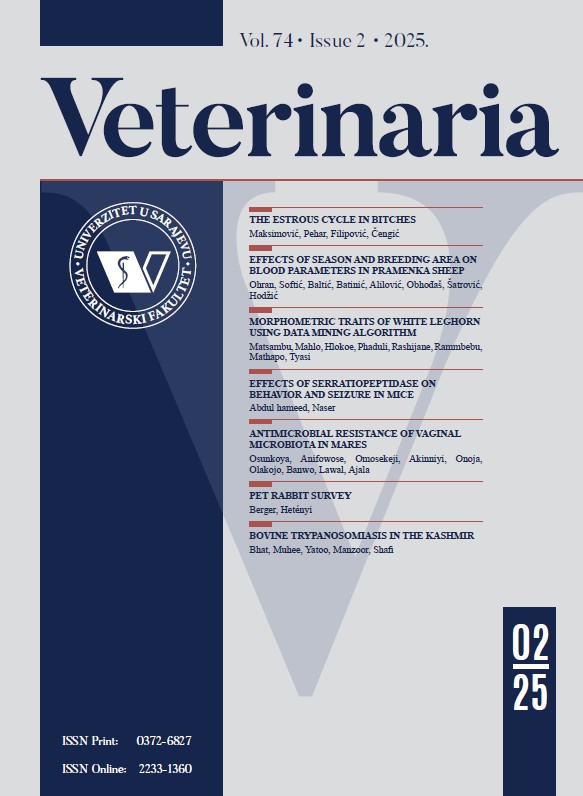Prevalence of gastrointestinal parasites and associated risk factors in slaughtered trade dromedary camels in Kano, Northern Nigeria
DOI:
https://doi.org/10.51607/22331360.2025.74.1.61Keywords:
Camels, gastrointestinal parasites, Northern Nigeria, prevalenceAbstract
Parasites are important in animal health because of the various significant challenge they pose to animal health and well-being. The prevalence and distribution of gastrointestinal parasitic infections among trade dromedary camels in Kano, a major hub for camel trade in Northern Nigeria, are not well documented. This study contributes to the development of effective parasite control strategies, improving camel health and productivity. This study investigated the prevalence of gastrointestinal parasites and associated risk factors in camels slaughtered at the Kano Main Abattoir in Nigeria. Using a cross-sectional study design, a total of 115 camels were examined for gastrointestinal parasites using faecal flotation and sedimentation techniques. The overall prevalence of gastrointestinal parasites was 84.4%, with 76.29% of infected camels having mixed parasite infections. Seven different parasite types were identified, belonging to nematodes (Strongyle spp., Trichuris spp., Strongyloides spp.), cestodes (Anoplocephala spp.), trematodes (Fasciola spp.), and coccidia (Eimeria cameli, E. rajasthani). The most prevalent parasites were Strongyle spp. (12.37%) and Trichuris spp. (7.22%). Risk factors significantly associated with parasite prevalence were sex (males 93.3%, females 74.5%) and faecal consistency (pasty 100%, pelleted 80.9%). Body condition score and presence of mucus in faeces did not show a significant association. The mean faecal egg count was 162.7 eggs per gram, with 92.63% of infected camels having mild infections. This study highlights the high burden of gastrointestinal parasites in camels in this region and the need for improved parasite control strategies.

Downloads
Published
How to Cite
Issue
Section
License
Copyright (c) 2025 Mary Oluwatomisin Elijah, Sani Adamu, Bisalla Mohammed, John Oluwamayokun Elijah, James Samson Enam, Sheriff Yusuf Idris, Maryam Nyeta Patrobas, John Addra Abari, Olumide Odunayo Akinniyi

This work is licensed under a Creative Commons Attribution 4.0 International License.







